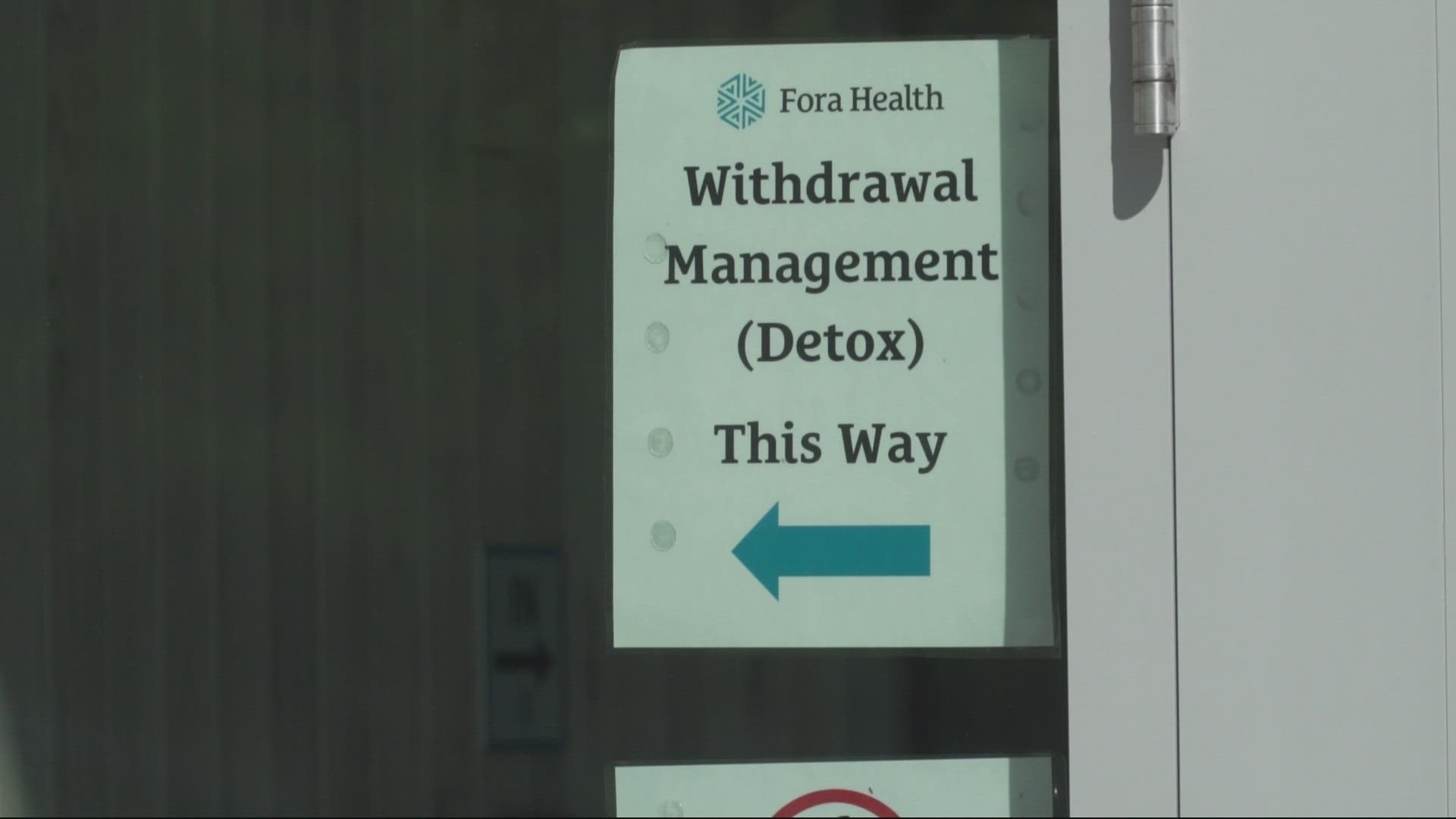PORTLAND, Ore. — About 20 people lined up outside Fora Health, a Southeast Portland detox center, early Tuesday morning. Each person suffers from addiction and many of them are homeless. They waited in line hoping there would be a bed for them.
After about thirty minutes, a couple walked out of the parking lot. They had just been turned away for the second day in a row.
“I just walked out of the rehabilitation center after waiting and said, 'I just need help' ... and to not be able to get that is very deflating,” said Erika Sherer. She’s been addicted to alcohol since she was 12 years old.
Sherer is now 46 and ready to quit, but she knows she can’t do it alone. When she tried last month, she ended up in the hospital.
“I almost bit off half of my tongue, had three grand mal seizures in one day because I quit alcohol,” she said.
Getting clean in Portland isn’t easy, seeing as there are only two large-scale drug detox centers accepting walk-ins. One is Fora Health in Southeast, and the other is Hooper Detox and Stabilization Center in North Portland. Neither of the two centers have enough beds for the number of people that line up outside each morning, leaving them no option but to turn people like Sherer away.
“I tried to go yesterday to another one, wasn’t able to be seen and then tried again today, wasn’t able to be seen,” Sherer said. Out of the 20 people lined up Tuesday morning she watched three get in.
“It takes enough courage just to show up to these places and then when the help isn’t there ... yeah, it’s definitely disappointing,” said Jimmy Sanchez, who was also turned away Tuesday morning. He’s been trying to get into detox for the past two days.
“They just took my information and then called all the names of who they were accepting and whoever they didn’t call they didn’t have a bed for today,” he explained.
“It’s awful … it’s awful,” said Jessica Gregg, Fora Health’s chief medical officer. “One of the earliest moments of distress of the day is when there’s a long line and there are six open beds.”
Fora just increased their number of beds for walk-in patients from 16 to 24, but it’s still not nearly enough. They also need more staff.
“Even just talking about it I’m almost choking up because it doesn’t get easier,” said Jennifer Hartley, who works with the walk-in patients at Fora Health. The majority are addicted to fentanyl or alcohol and nearly half of them are homeless.
“We see people for whom this is their very first time seeking any kind of treatment,” she said.
Hartley prioritizes those who keep showing up, even if there aren’t available beds. However, it doesn’t make turning them away any easier.
“We work to admit anywhere from 11 to 14 people a day, sometimes more, and we turn away about the same amount,” said Amanda Risser, who works at Hooper Detox Center. It's the only other large-scale treatment center offering walk-in detox services like Fora’s. They have 55 beds and help 2,500 people a year — that’s about 260 people a month.
“Every month we are unable to serve about the same amount of people due to space considerations. We just simply don’t have enough beds,” said Risser.
“I think nationwide we’re looking at ways to expand access to treatment and I think it can’t possibly happen fast enough,” added Hartley.
But for those struggling with addiction, time is of the essence.
“I just couldn’t go on anymore. I was dying,” said 26-year-old Kate Platte. In 2021, Platte slept in her car across the street from the De Paul Treatment Center, which is now Fora Health.
“I was addicted to meth and benzos, and I just couldn’t go on anymore," Platte continued, "and I hit my knees and cried out to God and said, 'God, if you’re real, could you please just get me sober or take me to heaven in my sleep tonight because I can’t go on another day like this.'”
At 18, Platte left the foster care system and her life spiraled out of control.
“I met a guy who ... it didn’t feel like homelessness, it just felt like we’d party every night and stay at a different person’s house and then in between we’d stay in our car," she said, "and I had never been homeless before, so it felt like an adventure — and eventually it wasn’t fun anymore, but at that point I was trapped.”
She was locked in a lifestyle that eventually changed when a rehab bed opened up.
“It was glorious. I slept for five days; the food was great and the nurses were so nice. I was just so happy to be here and feel that I was safe. It wasn’t survival anymore.”
But for people like Sherer, she’s left waiting and yearning for the day she can be set free.
“To not have to pick up a bottle, to not spend my time going to the liquor store in the morning because I have the shakes, to not go to a bar at 7 a.m. because I have the shakes,” said Sherer.
Both Fora Health and Hooper say they are almost always are able to get people in if they come two or three days in a row. Their doors open at 7:30 a.m. and it’s not first-come, first served. A typical stay for detox treatment is three to five days depending on the substance. After that they connect the patients with case managers to help keep them on the road to recovery.
The goal is to never discharge people back into homelessness, they said, but given the challenges they face that’s not always possible.

